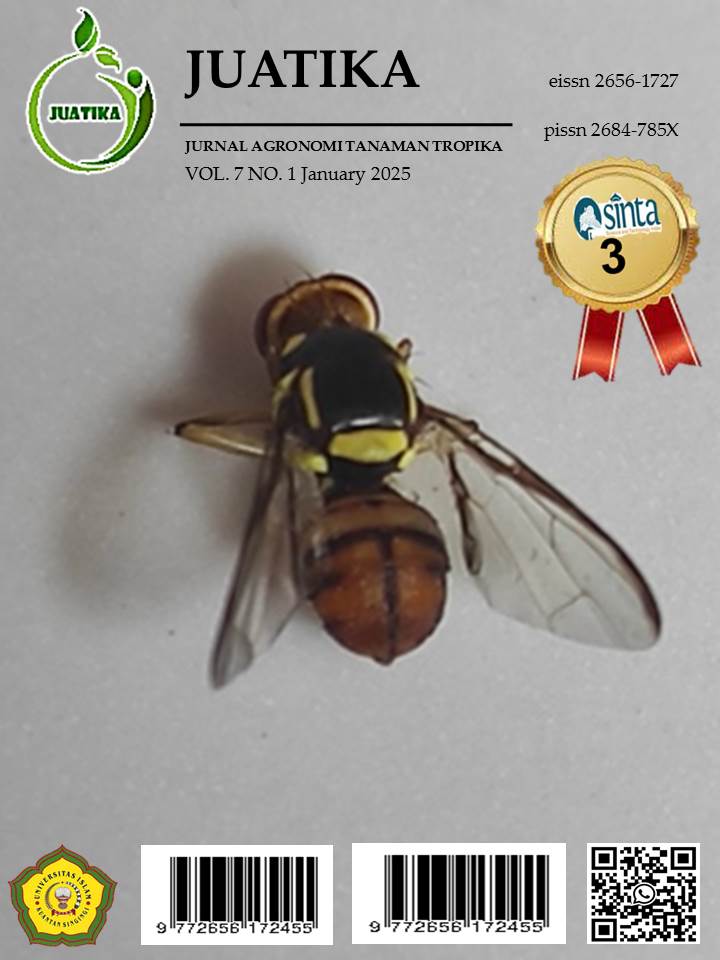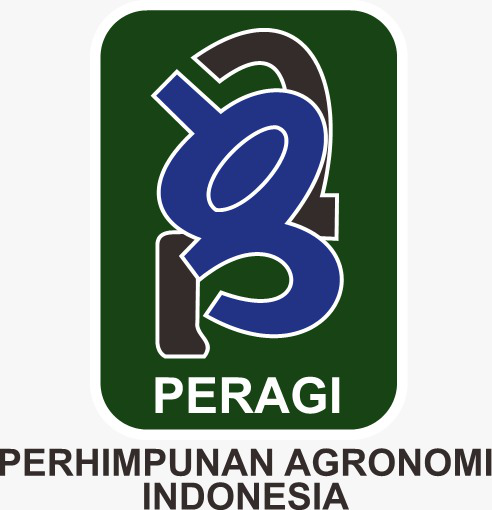Identifying the Potential Medicinal Plants in Tualang District, Siak Regency
Abstract
Many individuals residing in the Tualang District cultivate various medicinal plants; however, a significant portion of the population lacks awareness regarding the specific types and associated therapeutic properties. In general, only parents possess this knowledge. Therefore, further research is necessary to explore the variety and advantages of medicinal plants. The primary objective of this research is to categorize different varieties of therapeutic flora, their advantages, methods of application, and techniques for cultivation within the Tualang District. This research was carried out utilizing a survey methodology, employing various data collection methods, including interviews, and identifying and documenting medicinal plants. The study involved conducting observations and collecting data on the various types of medicinal plants, their associated benefits, methods of utilization, and cultivation practices as practiced by the residents of Tualang District. The data analysis in this research employed quantitative descriptive and qualitative descriptive methods. The information is displayed in tabular format. The research findings demonstrated that the respondents in Tualang District utilized and cultivated 41 different types of medicinal plants. Participants employed different methods to use medicinal plants. Participants cultivated medicinal plants through stem cuttings, rhizome cuttings, grafting, and direct seed planting. Medicinal plants are maintained through various agricultural practices, including watering, weeding, hilling, fertilizing, and implementing measures to control pests and diseases.
Downloads
References
Evizal, R. (2013). Tanaman rempah dan fitofarmaka. Lembaga Penelitian Universitas Lampung, Bandar Lampung.
Fernandes, A., Rizki, M., Handayani, R., & Apriani, H. (2019). Bunga rampai bioprospeksi tanaman obat di hutan tropis Indonesia. IPB Press, Bogor.
Hidayah, H. A., Alifvira, M. D., Sukarsa, & Hakim, R. R. A. (2022). Studi etnobotani sebagai obat tradisional masyarakat di Desa Adat Kalisalak, Banyumas, Jawa Tengah. Life Science, 11(1), 1–12.
Kustiawan, N., Maizar, M., Salman, S., & Riswandi, R. (2024). Application of rice washing water and organic NPK to increase caisim mustard plant (Brassica juncea L.) growth and production. Jurnal Agronomi Tanaman Tropika (Juatika, 6(1), 101–115. https://doi.org/10.36378/juatika.v6i1.3400
Lestari, F., & Susanti, I. (2019). Eksplorasi proses pengolahan tumbuhan obat imunomodulator Suku Anak Dalam Bendar Bengkulu. BIOEDUKASI (Jurnal Pendidikan Biologi, 10(2), 179. https://doi.org/10.24127/bioedukasi.v10i2.2495
Maryanti, A., Hastuti, D., & Arif Hardi, N. (2024). Effectiveness test of onion peel eco enzyme as bioinsecticide for armyworm pest (Spodoptera litura). Jurnal Agronomi Tanaman Tropika (Juatika, 6(2). https://doi.org/10.36378/juatika.v6i2.3589
Maulidiah. (2019). Pemanfaatan organ tumbuhan sebagai obat yang diolah secara tradisional di Kecamatan Kebun Tebu, Kabupaten Lampung Barat. Universitas Islam Negeri Raden Intan Lampung, Lampung.
Mindarti, S., & Nurbaeti, B. (2015). Tanaman obat keluarga. Balai Pengkajian Teknologi Pertanian, Jawa Barat.
Musaicho, D., Dirhamsyah, M., & Yanti, H. (2022). Pemanfaatan tumbuhan obat oleh masyarakat di Kelurahan Sebalo Kecamatan Bengkayang Kabupaten Bengkayang. Jurnal Hutan Lestari, 9(4), 546. https://doi.org/10.26418/jhl.v9i4.49858
Nurwadani, P. (2008). Teknik pembibitan tanaman dan produksi benih. Direktorat Pembinaan Sekolah Menengah Kejuruan, Jakarta.
Noorcahyati. (2012). Tumbuhan berkhasiat obat etnis asli Kalimantan. Balai Penelitian Teknologi Konservasi Sumber Daya Alam, Balikpapan.
Pratiwi, A., Datau, W. A., Alamri, Y., & Kandowangko, N. Y. (2021). Peluang pemanfaatan tumbuhan Peperomia pellucida (L.) Kunth sebagai teh herbal antidiabetes. Jambura Journal, 3(1), 85–93.
Puspitasari, A. D., & Prayogo, L. S. (2016). Pengaruh waktu perebusan terhadap kadar flavonoid total daun kersen (Muntingia calabura). Jurnal Inovasi Teknik Kimia, 1(2), 104–108.
Suhendra, A., Harahap, I. J., Tanjung, M., Hujaibah, P., & Daulay, N. (2022). The Journal of Science and Biology Education, 7(2), 61–67.
Sujarweni, V. W. (2023). Metodologi penelitian. Pustaka Baru Press, Yogyakarta.
Suryadarma. (2008). Etnobotani. Jurnal Online Internasional & Nasional, 53(9), 1689–1699.
Tima, M. T., Wahyuni, S., & Murdaningsih, M. (2020). Etnobotani tanaman obat di Kecamatan Nangapanda Kabupaten Ende Nusa Tenggara Timur. Jurnal Penelitian Kehutanan Faloak, 4(1), 23–38. https://doi.org/10.20886/jpkf.2020.4.1.23-38
Utami, F. P., Matahari, R., & Ikhsanudin, A. (2018). Tanaman obat keluarga (TOGA): Manfaat dan cara pengolahannya. Pustaka Ilmu, Yogyakarta.
Warida, S., & Brahmana. (2016). Identifikasi tumbuhan obat yang ada di Kecamatan Rambah Hilir Kabupaten Rokan Hulu Propinsi Riau. Naskah Publikasi Fakultas Keguruan dan Ilmu Pendidikan Universitas Pasir Pengaraian, 2(1), 1–6.
Qamari, A. M., Tarigan, D. M., & Alridiwirsah. (2017). Budidaya tanaman obat & rempah. UMSU Press, Medan.
Copyright (c) 2025 Sri Yoseva, Erlida Ariani, Atika Rifdah Risaleh

This work is licensed under a Creative Commons Attribution 4.0 International License.
Authors who publish with Jurnal Agronomi Tanaman Tropika (JUATIKA) agree to the following terms:
Authors retain copyright and grant the Jurnal Agronomi Tanaman Tropika (JUATIKA) right of first publication with the work simultaneously licensed under a Creative Commons Attribution License (CC BY 4.0) that allows others to share (copy and redistribute the material in any medium or format) and adapt (remix, transform, and build upon the material for any purpose, even commercially) with an acknowledgment of the work's authorship and initial publication in Jurnal Agronomi Tanaman Tropika (JUATIKA).
Authors are able to enter into separate, additional contractual arrangements for the non-exclusive distribution of the journal's published version of the work (e.g., post it to an institutional repository or publish it in a book), with an acknowledgment of its initial publication in Jurnal Agronomi Tanaman Tropika (JUATIKA). Authors are permitted and encouraged to post their work online (e.g., in institutional repositories or on their website) prior to and during the submission process, as it can lead to productive exchanges, as well as earlier and greater citation of published work.







 More Information
More Information



